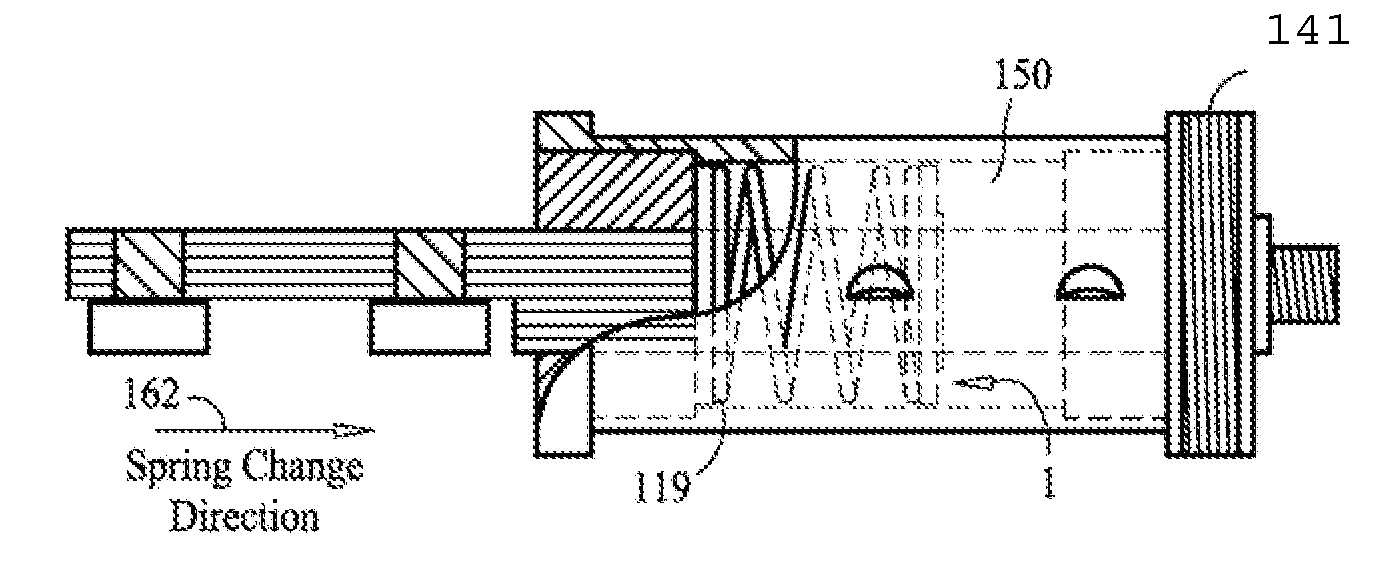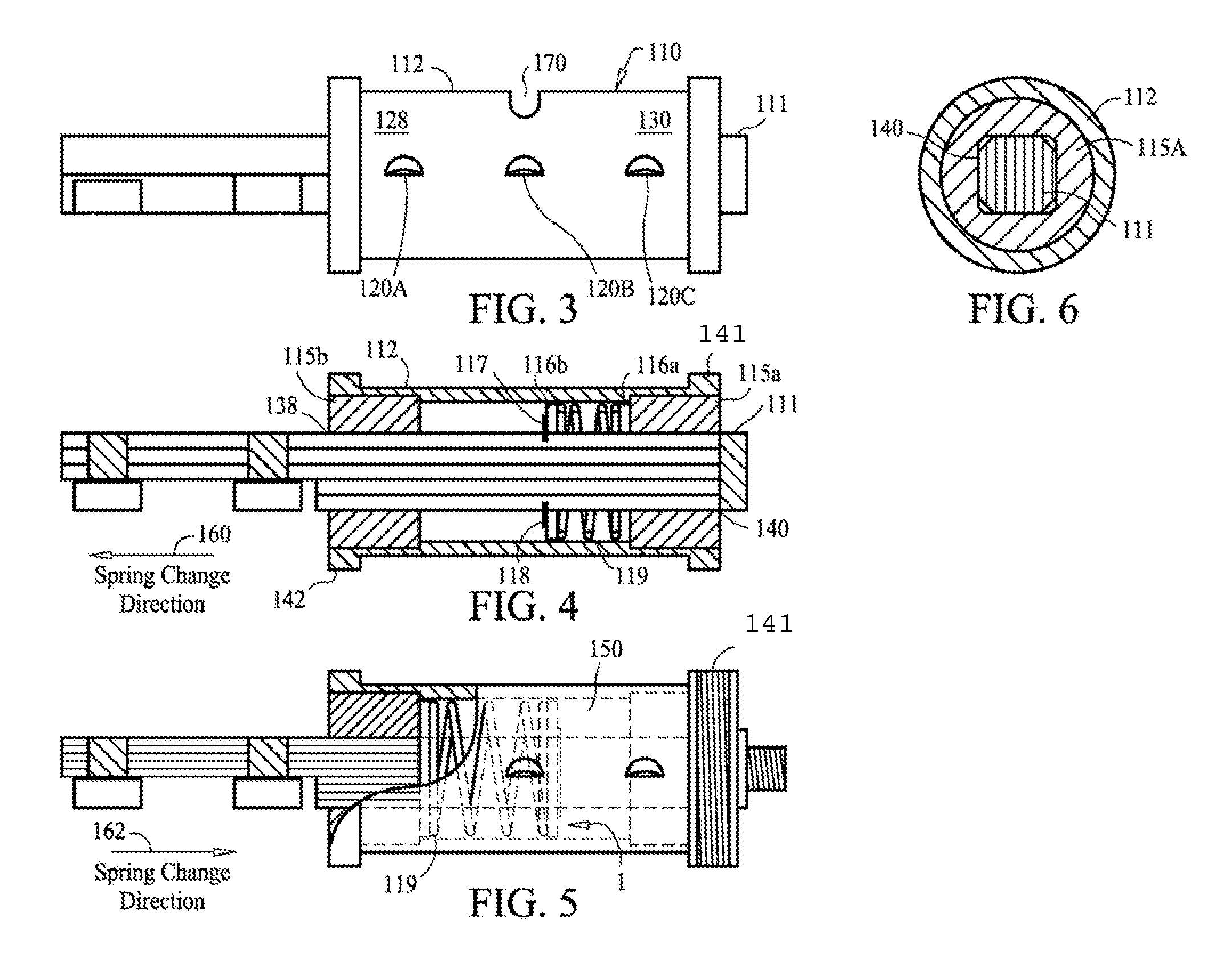Ram for metal can shaper
a metal can and ram technology, applied in the direction of shaping tools, forging/pressing/hammering apparatus, forging/hammering/pressing machines, etc., can solve the problems of tube lubing process having continual problems, coupling wear out, and self-must be strong enough to withstand, so as to reduce friction, reduce drag, and increase life. the effect of length
- Summary
- Abstract
- Description
- Claims
- Application Information
AI Technical Summary
Benefits of technology
Problems solved by technology
Method used
Image
Examples
Embodiment Construction
[0021]The following detailed description is of the best currently contemplated modes of carrying out the invention. The description is not to be taken in a limiting sense, but is made merely for the purpose of illustrating the general principles of the invention, since the scope of the invention is best defined by the appended claims.
[0022]FIG. 1 depicts a typical ram assembly 61. The bushing 62 has a round bore 63 in which the ram slides in. The ram 64 has a key 65 that slides in a key way (not shown) The tail portion 66 has two cam followers (67a and 67b). FIG. 2 depicts a cross sectional view of a portion of a BELVAC metal can forming machine. A central shaft 50 is motor driven and rotates. The turrets are fixed to the shaft and rotate with it. Series of rams are mounted to the turrets. A series of lubrication tubes 55 leads to a lubrication nozzles 56. The ram assembly 54 includes a fixed bushing 57 having a round bore and a ram 58. The tail portion 59 of the ram 58 carries two ...
PUM
| Property | Measurement | Unit |
|---|---|---|
| time | aaaaa | aaaaa |
| external pressures | aaaaa | aaaaa |
| pressures | aaaaa | aaaaa |
Abstract
Description
Claims
Application Information
 Login to View More
Login to View More - R&D
- Intellectual Property
- Life Sciences
- Materials
- Tech Scout
- Unparalleled Data Quality
- Higher Quality Content
- 60% Fewer Hallucinations
Browse by: Latest US Patents, China's latest patents, Technical Efficacy Thesaurus, Application Domain, Technology Topic, Popular Technical Reports.
© 2025 PatSnap. All rights reserved.Legal|Privacy policy|Modern Slavery Act Transparency Statement|Sitemap|About US| Contact US: help@patsnap.com



